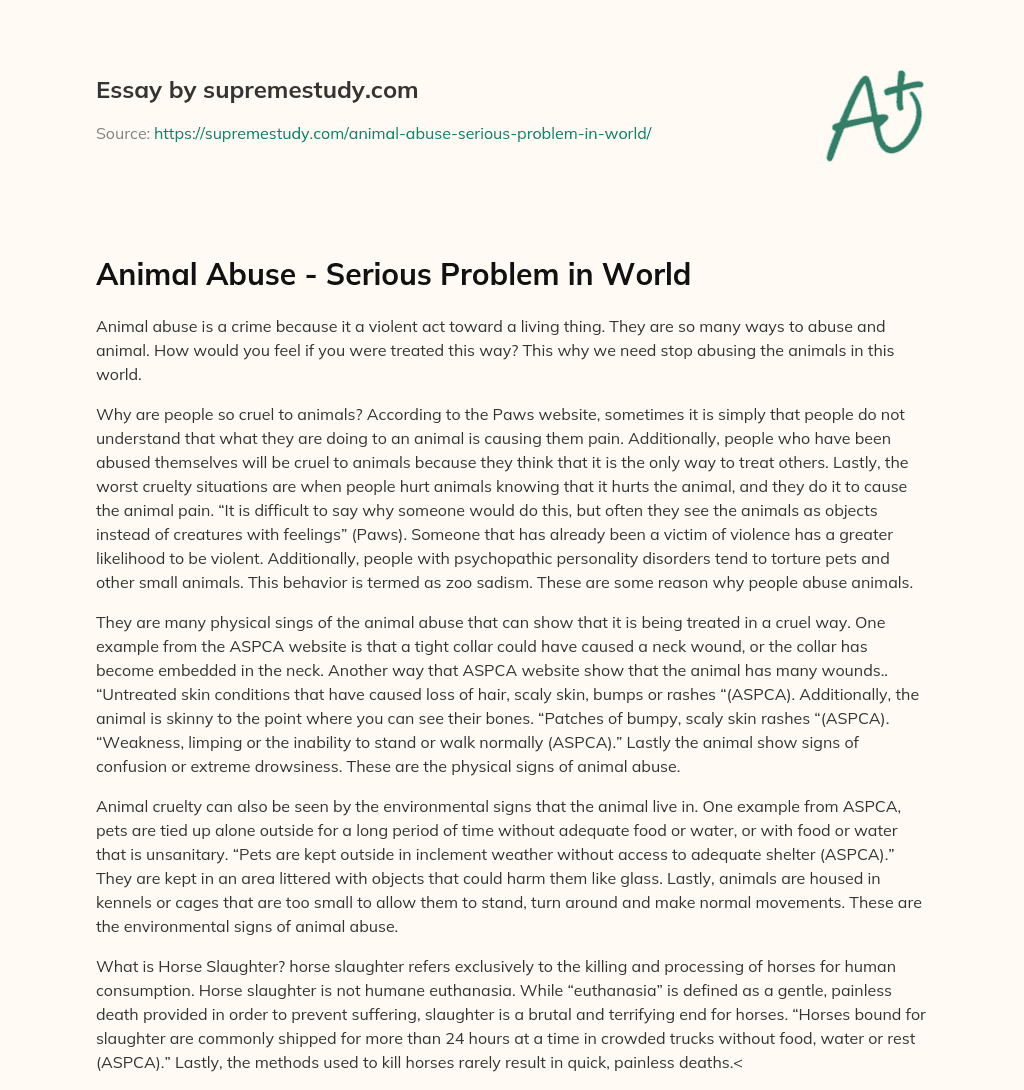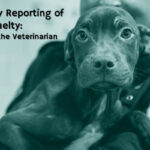Animal abuse is an egregious reflection of humanity’s darker tendencies, an insidious phenomenon that often goes unacknowledged in contemporary discourses surrounding ethics and morality. This short essay engages with the multifaceted dimensions of animal abuse, exploring not only its manifestations but also the psychological and societal factors that contribute to its prevalence. The topic prompts a vital reconsideration of the relationship between humans and animals, urging us to confront the moral implications of our interactions with non-human lives.
At its most basic, animal abuse encompasses a wide array of harmful actions, including physical violence, neglect, and exploitation for entertainment or profit. The violent imagery often associated with animal cruelty—such as dogs being beaten, horses forced to race despite injury, or factory-farmed animals living in unspeakable conditions—reveals a chilling reality. However, these images frequently fail to represent the deeper societal issues that allow such cruelty to persist unchallenged.
Understanding animal abuse requires an exploration into the psychology behind such actions. Many abusers often operate under a veil of ignorance or apathy, viewing animals as mere commodities rather than sentient beings with intrinsic value. This objectification fosters a culture that not only permits harm but, in some instances, glorifies it. Media portrayals of animals as “lesser beings” further perpetuate this narrative. The frequent portrayal of animals in a negative light, relegated to the background of human narratives, emboldens this perspective.
Moreover, the interconnection between animal abuse and broader societal violence cannot be overlooked. Numerous studies illuminate the correlation between individuals who perpetrate violence against animals and those who engage in violent behavior towards people. This connection compels society to recognize animal abuse not merely as a distinct issue, but as part of a continuum of violence. Furthermore, individuals who witness or experience violence may become desensitized, thus perpetuating the cycle of abuse across classes, cultures, and communities.
A disconcerting facet of animal abuse lies in its prevalence within forms of entertainment. From circuses to dog fighting, the normalization of such practices suggests a deep-seated disregard for animal welfare. The societal acceptance of blood sports or spectacle-based entertainment arguably demonstrates a collective desensitization to suffering. Furthermore, the commodification of animals for entertainment often masquerades as cultural tradition, complicating moral stances and fostering resistance to change. This amalgamation of tradition and cruelty requires a nuanced approach to advocacy.
The issue of neglect also deserves critical scrutiny. Millions of animals languish in homes, tethered by ignorance and mismanagement rather than overt malice. Such neglect can be rooted in socioeconomic challenges, where pet ownership becomes entangled with financial strain. Educational efforts surrounding responsible pet ownership and the humane treatment of animals could alleviate this burden and promote a more compassionate society. Stakeholders, including local governments and animal rights organizations, must prioritize these educational initiatives if they are to make a meaningful impact.
Legislation serves as another crucial mechanism in the fight against animal abuse. While laws exist to protect animals, gaps remain in enforcement and public awareness. Countries and states vary greatly in the robustness of their animal welfare laws, and discrepancies often lead to ambiguity regarding what constitutes abuse. Advocating for stronger laws and more consistent enforcement is indispensable. It invites a shift in public consciousness, urging society to hold abusers accountable for their actions while promoting compassion.
While traversing the landscape of animal abuse, one cannot ignore the role of advocacy and activism. Grassroots movements and high-profile campaigns have successfully raised awareness and contributed to cultural shifts. Organizations dedicated to animal rights work tirelessly to disseminate information and challenge deep-rooted misconceptions. However, the challenge remains: how to engage more individuals in this movement? Piquing public curiosity requires innovative storytelling, utilizing diverse platforms to elucidate the plight of animals and galvanize action. Social media has emerged as a potent tool, offering a direct line to a vast audience eager for change.
Nevertheless, the solutions to animal abuse are not singular; they require a multifaceted approach. Reducing abuse necessitates an alliance among various stakeholders: legislators, educators, animal welfare organizations, and the public. Each holds a unique position from which to effect change. Creating a society that values compassion and responsibility towards animals is ultimately the shared responsibility of all. Understanding the cost of animal abuse transcends mere empathy—it hinges on the acceptance of our interconnectedness with all living beings.
In conclusion, animal abuse serves as a poignant reminder of the ethical dilemmas that permeate our world. By acknowledging its various forms and addressing the underlying issues that perpetuate these acts of cruelty, society can embark on a path toward genuine reform. This endeavor not only promises to enrich the lives of animals but may also redefine humanity’s relationship with itself. As we challenge the prevailing narratives and seek to understand the implications of our actions, we might glimpse a future in which compassion supplants cruelty, giving voice to the voiceless and ensuring a more humane existence for all.








